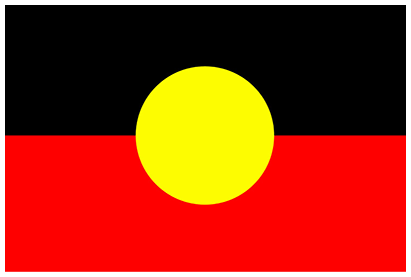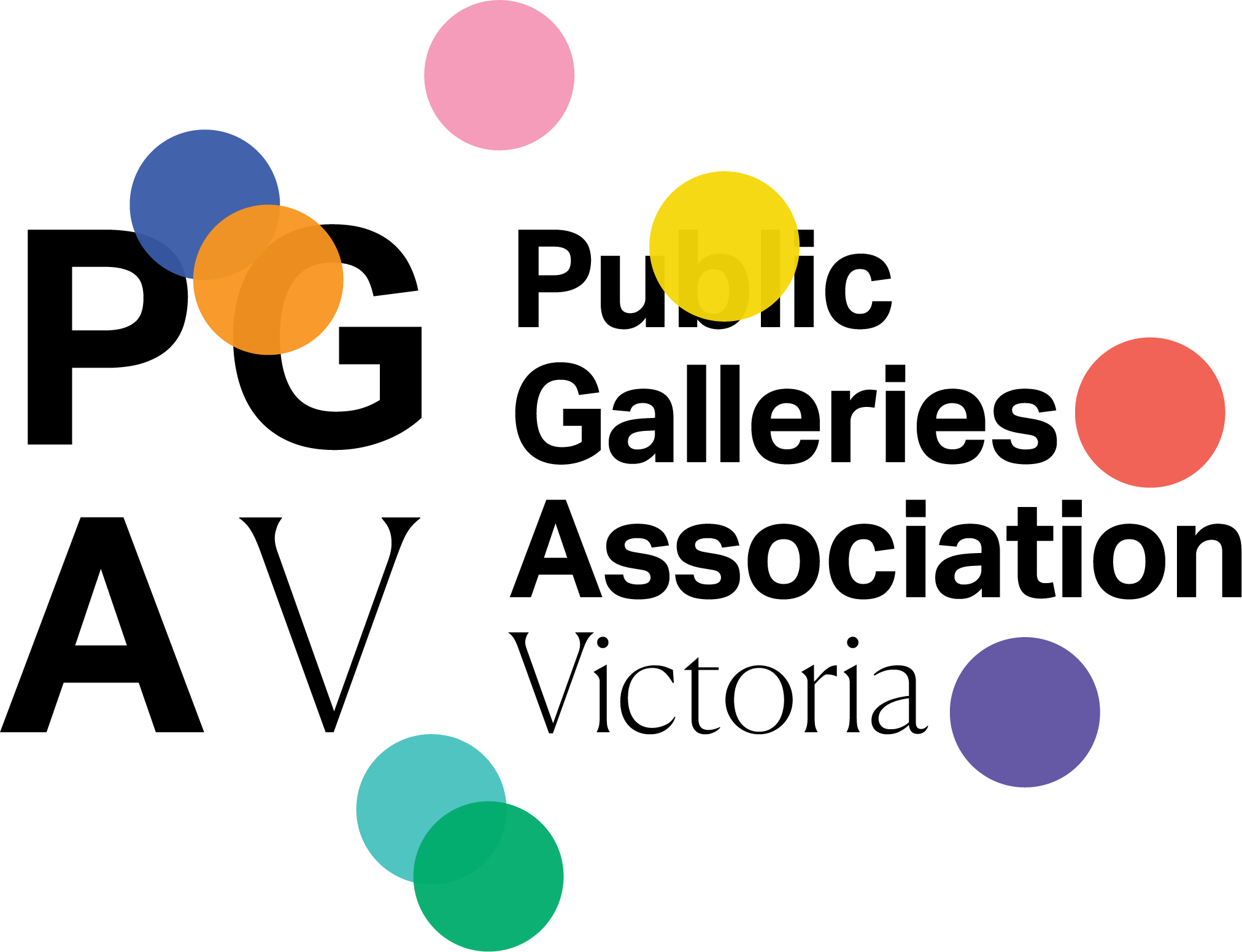COMMUNICATIONS AND MARKETING OFFICER
Professions in the Public Gallery Sector

mark orlandi
Marketing & Audience Engagement Officer
Bendigo Art Gallery
Date: May 2023
the role of Communications and Marketing Officer
The Communications and Marketing Officer ensures an effective communications and marketing strategy is implemented. They are a skilled copywriter responsible for building organisational profile, production and delivery of all marketing collateral, including annual programs and reports, posters and catalogues. They prepare media releases, website content, e-news and promote the gallery through social media.
For information about roles within public galleries see the PGAV Fact Sheet: Staffing Levels & Position Titles
How did you get started in your career and what formal qualifications or experience do you have?
My career has taken a lot of twists and turns as I searched for a position that I loved, which I have finally found here at Bendigo Art Gallery. I have a Bachelor of Commerce and a Graduate Diploma in Tourism. I caught the travel bug in my early career and worked a lot in Business Development eventually landing in marketing roles where I excelled. I was involved in destination marketing when I applied for the role of Marketing and Audience Engagement Officer at Bendigo Art Gallery. Working at Bendigo Tourism and collaborating with Bendigo Art Gallery on international exhibitions provided great insight into the Gallery's diverse audiences and how to engage. I have been in the role now for six years and am always looking for ways to improve myself and my work.
What does your role as Marketing & Audience Engagement Officer encompass?
My role of Marketing & Audience Engagement Officer here at Bendigo Art Gallery involves a variety of responsibilities related to promoting the gallery and engaging with our audiences. A big part of the role is creating a brand for each exhibition and then developing a marketing campaign around the exhibition within the budget provided. For our larger exhibitions I also need to work heavily with third parties such as the Destination Marketing unit at the City of Greater Bendigo to extend the campaign as far as I can.
Overall I need to develop, implement and scrutinise marketing strategies to promote the gallery's exhibitions, events, programs and collection. I create and distribute promotional materials such as brochures, flyers, posters, and online content. We now have a digital marketing position which I oversee including the gallery's social media presence and follower engagement.
Other aspects of my role is also building relationships with community partners, stakeholders, and media outlets to increase visibility and awareness of the gallery. Audience research to better understand and develop strategies to engage them.
What knowledge and skills do you think are most needed for this role?
As with any marketing position this role requires strong communication, organizational, and analytical skills, as well as a deep understanding of marketing and audience engagement strategies.
I would love to say that I have a strong knowledge of art and art history, but I don’t! I feel this is to my advantage as I’ve noticed that it can be a distraction. However, it is important to have art knowledge be readily accessible from the people that you work with.
The knowledge and skills needed for a Gallery marketing and audience engagement role:
Marketing and advertising: A public gallery marketer should have a strong understanding of marketing principles, such as branding, market research, and advertising. They should be able to develop effective marketing strategies to promote exhibitions, events and the collection.
Communication skills: Effective communication skills are crucial for a public gallery marketer. They should be able to communicate the value of the gallery's collection, exhibitions and programs to a wide range of audiences, including visitors, donors, sponsors and internal stakeholders.
Digital marketing: As digital platforms become more important for marketing and advertising, a marketer in a public gallery should have a strong understanding of digital marketing tools and strategies, such as social media, email marketing, and search engine optimization.
Data analysis: A marketer working in a public gallery should be able to analyse data and use it to inform marketing decisions. This could include analysing visitor data, survey results, digital analytics and marketing campaign performance metrics.
Project management: A public gallery marketer should be able to manage multiple projects at once, coordinating with other departments and stakeholders to ensure that marketing campaigns and events are delivered on time and within budget.
Cultural sensitivity: Public galleries often deal with sensitive or controversial topics, and a marketer should be able to navigate these issues with cultural sensitivity and respect. They should be aware of the social and political context surrounding exhibitions and programs, and be able to communicate these issues effectively to a diverse audience.
Creativity: A marketer in a public gallery should be able to develop creative marketing campaigns and promotional materials that engage audiences and reflect the gallery's brand and values.
What are the unique challenges and opportunities for a marketer working in a public gallery?
Challenges:
Limited Budget: I often have limited marketing budgets, which makes it challenging to promote our exhibitions and events to a broader audience. I have learnt to be creative in finding cost-effective ways to reach our target audience. I have also learnt to be very good at asking for help.
Competition: Australia has a thriving arts and cultural sector, with many galleries, museums, and cultural institutions competing for the public's attention. It can be challenging to stand out in a crowded market.
Geographic Location: We are located outside a major city (2 hours north of Melbourne), making it challenging to attract visitors who may prefer to visit more accessible galleries in metropolitan areas. It’s important to play in the destination marketing space to offer more incentive to travel up the Calder highway.
Audience Diversity: we need to attract a diverse audience, including people from different cultural backgrounds, ages, socioeconomic groups etc. Creating marketing campaigns that resonate with different groups can be challenging.
Digital Transformation: With the increasing importance of digital marketing and its rate of change, we need to keep on top of digital marketing knowledge and strategies that engage audiences across multiple channels, including social media, email marketing, and website optimization. I don’t even know where to start with AI…..
Artistic Vision: I have to balance marketing efforts with our artistic vision, ensuring that our marketing campaigns align with the gallery's overall objectives and goals. This can be challenging as an economic driver in the Bendigo region as well as meeting funding agreements.
Opportunities:
Building Brand Awareness: Our larger exhibitions often help build brand awareness for the Bendigo Art Gallery, increasing our visibility and reputation among local and national audiences.
Collaboration: We often have the opportunity to collaborate with other cultural institutions to create exciting events and exhibitions. I can leverage these partnerships to create unique and engaging marketing campaigns.
Digital Innovation: Digital marketing presents an opportunity for us to reach audiences beyond our geographic location. Social media, email marketing, and website optimization can amplify our promotions of our exhibitions and events, attract new visitors and build a loyal following and as well as increase our online presence.
Sponsorship and Funding: Effective marketing can help attract corporate sponsorship and funding, which helps to contribute to my much-needed budget.
What do you enjoy most about your role?
Pretty much everything. It changes every day and I am never bored for someone who has a very short attention span! I love a good story told well and our exhibitions are curated by very talented people which make the story easy to be told. I get to be creative in my own way within the creative industry. When it works it is very rewarding. Raising awareness of the importance of art and its impact on society is extremely fulfilling. I love connecting with people. I get to meet and interact with incredibly interesting people from different backgrounds and engage with them on a personal level. I also enjoy contributing to the community of Bendigo and to our audiences, providing access to art and culture, fostering creativity and education, and promoting diversity and inclusion.
What has been your career highlight so far?
Working with the team here at Bendigo Art Gallery on Elvis: Direct from Graceland. The exhibition’s economic impact to Bendigo was $69 million and this on the back end of Covid. We worked really hard on promoting this exhibition and the success was overwhelming. It shows what a cultural institution brave enough to step outside its comfort zone can achieve for its community.


Images: Elvis: Direct from Graceland exhibition at Bendigo Art Gallery, 19 March - 17 July 2022.
What are the key issues for public galleries into the future?
Attracting diverse audiences: we need to appeal to a wide range of people, including different age groups, backgrounds, and interests. Marketers need to develop strategies that effectively target these diverse audiences and create programming that appeals to their interests.
Digital engagement: In the digital age, it is essential for us to have a strong online presence. We need to create engaging digital content to attract and retain audiences with our limited budgets. We need to keep on top of changes in the digital world.
Funding and revenue: We rely on public funding for some of our marketing activities so we need to continuously develop strategies that effectively communicate the gallery's value for that funding in a very competitive marketplace.
Competition from other cultural institutions: we face high competition from other cultural institutions, for audience attention and funding. We need to differentiate our offerings and communicate our unique value proposition to be noticed and attract audiences.
Digitization: One of the biggest challenges for public galleries is to adapt to the increasingly digital nature of the art world. As more and more people consume art through digital channels, galleries must find ways to engage with their audiences online while also maintaining the value of physical exhibitions.
Diversity and Inclusion: The issue of diversity and inclusion has been a major topic in the art world in recent years. Public galleries will need to continue to address this issue and find ways to showcase a wider range of artists and perspectives.
Funding: We often rely on government funding, which can be unpredictable and subject to political pressures. As public budgets tighten, galleries may need to find new sources of funding or look to partnerships with private entities.
Climate Change: The issue of climate change is increasingly relevant for public galleries, which often consume large amounts of energy and resources. Galleries may need to find ways to reduce their environmental impact and become more sustainable.
Changing audience expectations: As audience expectations evolve, galleries will need to find new ways to engage with their visitors. This may involve new technologies, interactive exhibits, and other innovations to enhance the gallery-going experience.
The Public Galleries Association of Victoria (PGAV) acknowledges the Wurundjeri Woi-Wurrung people of the Kulin Nation as the Traditional Owners of the lands where our office is located, and all Traditional Owners of country throughout Victoria and Australia. We recognise Aboriginal and Torres Strait Islander peoples enduring traditions and continuing creative cultures. We pay our respect to Elders past, present and emerging.
We are an LGBTQIA+ friendly organisation that celebrates diversity. We are committed to providing safe, culturally appropriate, and inclusive services for all people, regardless of their ethnicity, faith, disability, sexuality, or gender identity.






